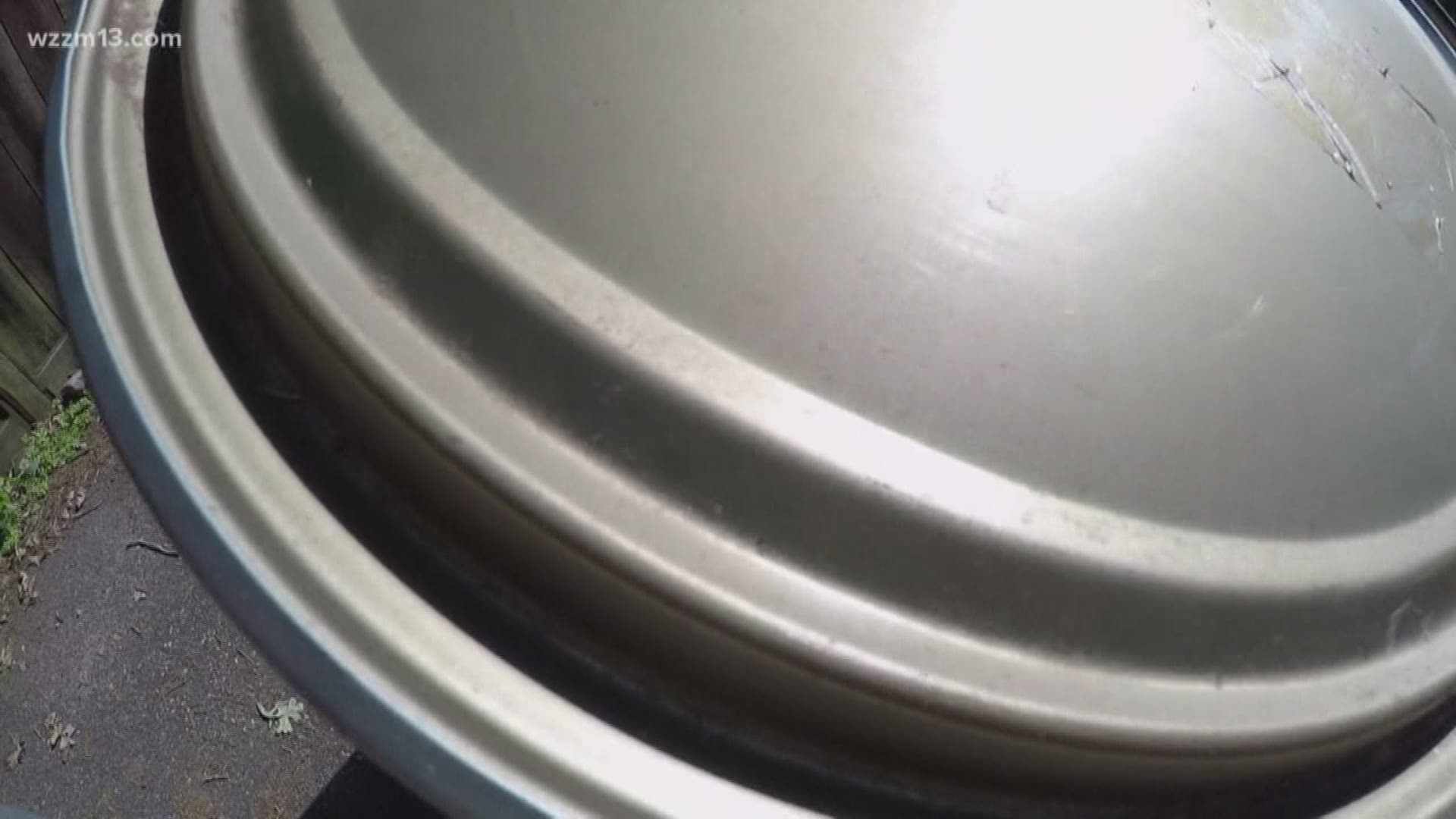Seventy-three years ago, a piece of the war came to Dorr, Michigan.
It was a Japanese Fu-Go Balloon.
Seventy-three years later, a group of people have galvanized, hoping a newly-launched fundraising campaign will meet the necessary budget demands, and a comprehensive exhibit can be built around this extremely rare and fascinating artifact.
"It would be a shame if this artifact needed to stay sealed in a crate," said Valerie van Heest, who is a partner in the exhibit design firm Lafferty van Heest & Associates, which has been selected to develop the Fu-Go exhibit. "I've dealt with a lot of artifacts in my career, but this particular artifact is probably the most intact Fu-Go envelope that still exists in the world."
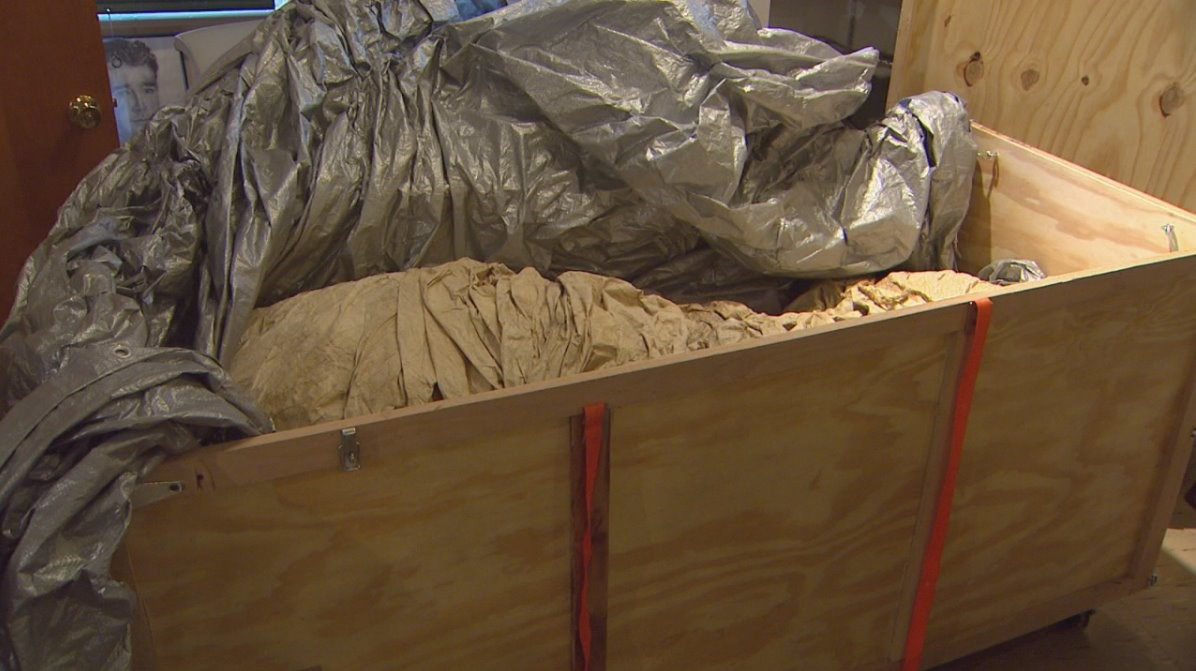
van Heest learned about the balloon and it's connection to West Michigan soon after WZZM aired a story entitled, "When the War Came to Dorr" in February 2017. It was also learned during the production of that piece that the exact Fu-Go envelope found in Dorr still existed, and was in the possession of a Minnesota man, Don Piccard.
Our Michigan Life | Fu-Go Balloon series:
- When the War Came to Dorr
- Anonymous donor comes forward with $10,000 to bring Dorr Fu-Go Balloon home
- A piece of the War has returned to Dorr: The Fu-Go Balloon comes home
- Man gets to see the Fu-Go Balloon he helped find 72 years ago
- Japanese Fu-Go Balloon found in Dorr unfurled in field; exhibit coming in 2018
In May 2017, Piccard sold the balloon to members of the Byron Center Historical Society for $10,000, thanks to an anonymous donation.
A month later, van Heest was invited by Theresa Kiel, curator for the Byron Center Museum, to an open field near Dorr where the balloon was unfurled and examined for the first time in decades. It was that day van Heest realized the balloon needed to be on exhibit for West Michigan, and possibly the rest of the country, to see.

"We're looking forward to being able to open the Fu-Go [balloon], put it on a stand, inflate it the way it once was, and interpret it the way that it looked when it came down in that field in Dorr, Michigan 73 years ago," said van Heest.
In late summer of 2017, both van Heest and Kiel determined that the Byron Center Museum wasn't big enough to house an exhibit for the balloon. The historic building has low ceilings and limited space, and doesn't draw much foot traffic.
The pair continued brainstorming, hoping a better location would present itself.
"I reached out to the Air Zoo Aerospace & Science Museum in Kalamazoo to see if they had interest," said van Heest. "To have an aviation museum within a half hour of Dorr, where the balloon touched down, is an amazing connection to that history."
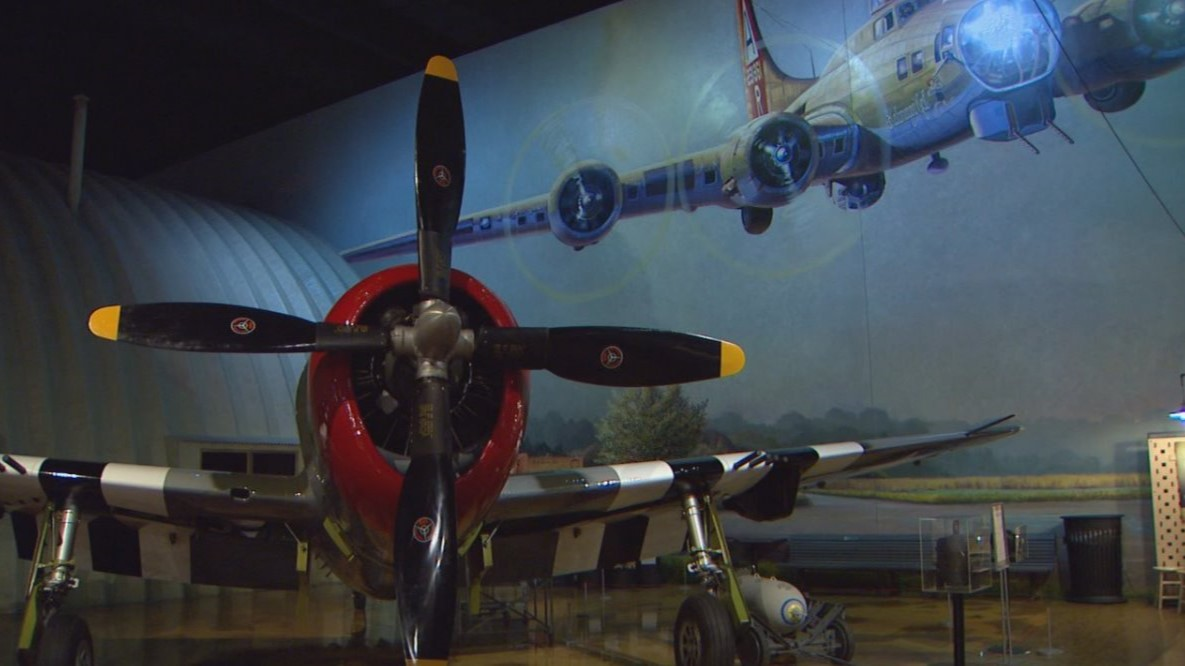
In September 2017, van Heest and Kiel were invited to the Air Zoo to tour the facility and begin a dialogue with Air Zoo officials about it possibly becoming the future home for the Fu-Go Balloon exhibit.
"Immediately, our ears perked up because it's very rare you hear anything anymore about Fu-Go Balloons," said Troy Thrash, president and CEO of the Air Zoo. "Being a flight museum that we are, we want to be a part of helping to tell the story, not only of the balloon that landed in Dorr, but use it to explore the whole Fu-Go initiative."
Thrash led Kiel and van Heest to a location on the Air Zoo's gallery floor where space has since been reserved for the possible Fu-Go Balloon exhibit. A few weeks later, Thrash traveled to Byron Center to get an up-close-and-personal look at the balloon.
The project continued to gain momentum. van Heest created some schematic designs for what the exhibit will look like, and also formulated a budget for what it will likely cost to develop.
"The exhibit will interpret the four phases of the Fu-Go campaign: the Doolittle Raid, which was America's retaliation in Japan after Pearl Harbor, and led to the Fu-Go attack; the launching of the balloons, the science behind using the jet stream, and how they crossed the Pacific Ocean; what happened when some of the the balloons reached America, and how the FBI insisted on media silence; and the local connection with the Fu-Go found in Dorr.
"There will be four kiosks and each will be very interactive for visitors of all ages, with the centerpiece of the exhibit being the Dorr balloon fully inflated and suspended. We will also fabricate a replica Fu-Go chandelier."
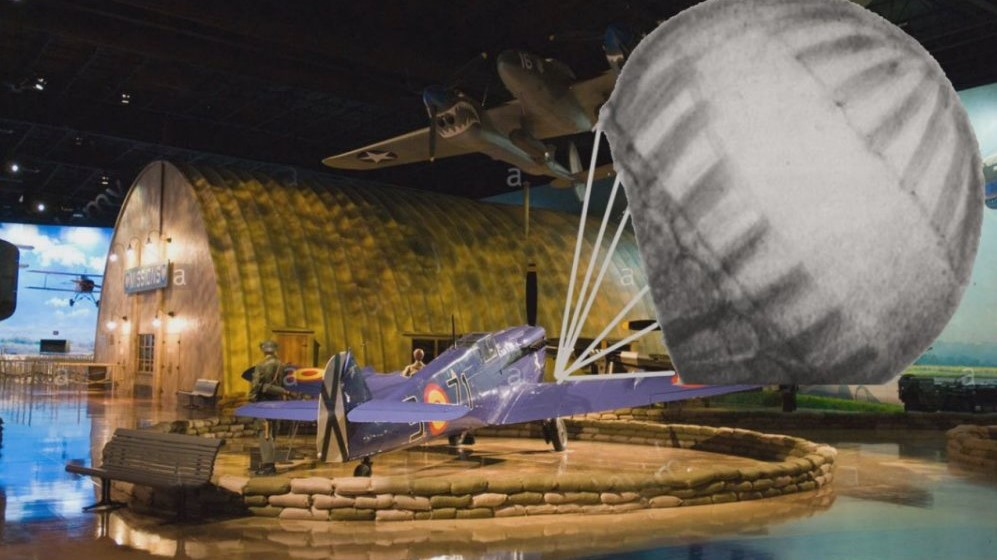
When officials from the Air Zoo saw van Heest's designs, they were thrilled with them.
"[After seeing the schematics], it gives you a sense of urgency to be able to make something real and deliver that story," said Thrash. "We want visitors to the Air Zoo to immerse themselves in this story and not be distant from it.
"This exhibit will more than allow for that experience."
The exhibit will be costly.
"We've budgeted $137,000 for the fabrication of this exhibit," said van Heest. "Almost half of that money will be dedicated toward the interactive elements.
(story continues below PDF)
"Once we have the money in hand, it'll take a year to complete the exhibit."
van Heest says she plans to create the exhibit in such a manner that it could eventually become mobile and be used to travel around the country and share the Fu-Go story.
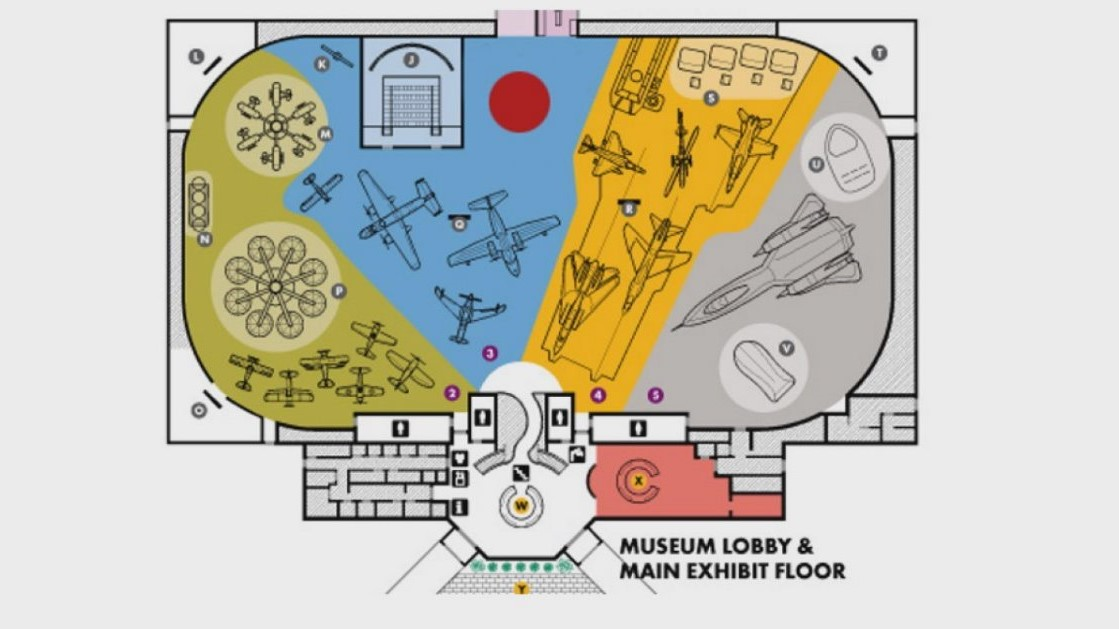
"In the 1970s, the Smithsonian Institute had an authentic Fu-Go Balloon envelope, and put it on exhibit," said van Heest. "There's never been a sizable exhibit on the Japanese Fu-Gu Balloon campaign since, and now we have the opportunity do develop the nation's most comprehensive exhibit."
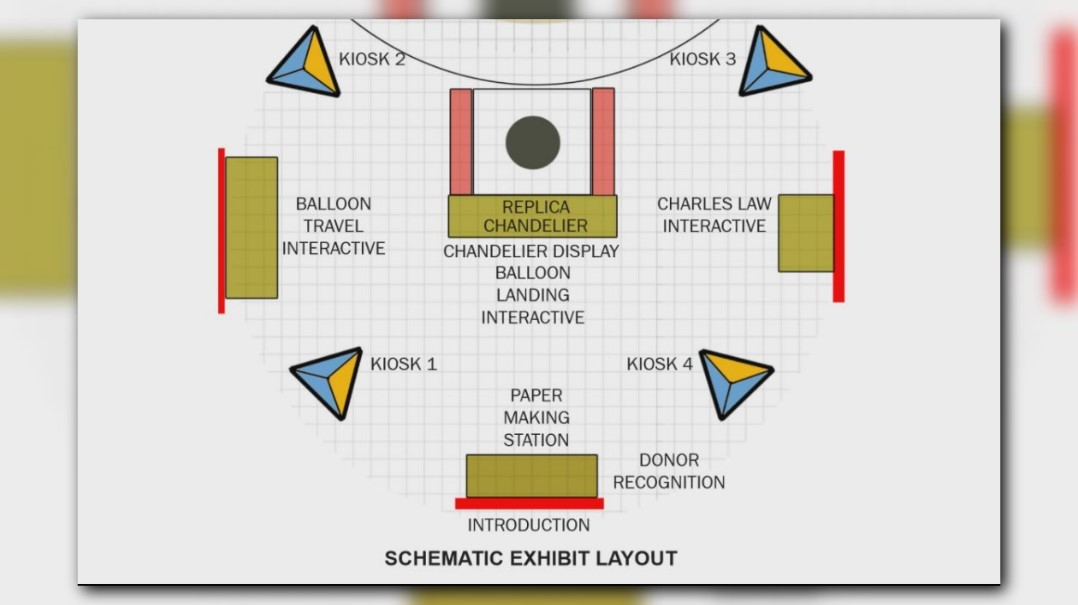
The story of the Fu-Go Balloon that landed in Dorr, and how it found its way back to Dorr, has fascinated many since WZZM re-introduced it in February 2017 with a story entitled, "When the War Came to Dorr."
It happened Feb. 23, 1945. Three pre-teen boys (brothers Bob and Ken Fein, along with their friend Larry 'Buzz' Bailey) were playing in a field in northern Allegan County when they saw a big blob floating overhead.
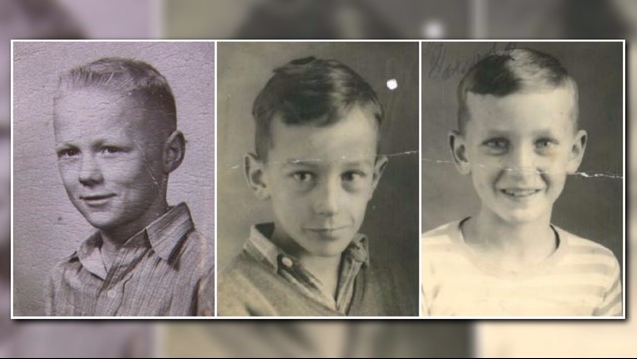
The boys watched it descend at a 45-degree angle and land in a nearby field. A family friend of the Feins drove the boys to the location where the object landed. It was laying in a field, flapping in the wind, along 21st Steet.
They decided to roll the object up and take it back to the Fein's farm where they promptly stuffed it into the basement. The very next day, federal agents came to the Fein's farm, confiscated the object, and told everybody in the home to say nothing about finding it.
It took 15 years to pass until the Fein brothers and Larry Bailey learned what they had discovered that day was a Japanese Fu-Go Balloon bomb.
"Had the balloon still had the bomb attached to it when we found it, we would have still gotten in there and wrapped it up and dragged it to the road," said Larry Bailey, during an interview with WZZM in early 2017. "It could have gone off and killed us all."
The Fu-Go Balloon was a weapon developed by the Japanese to wreak havoc on America during World War II. From November 1944 to April 1945, roughly 9,300 of these balloons were launched off the coast of Honshu, Japan.
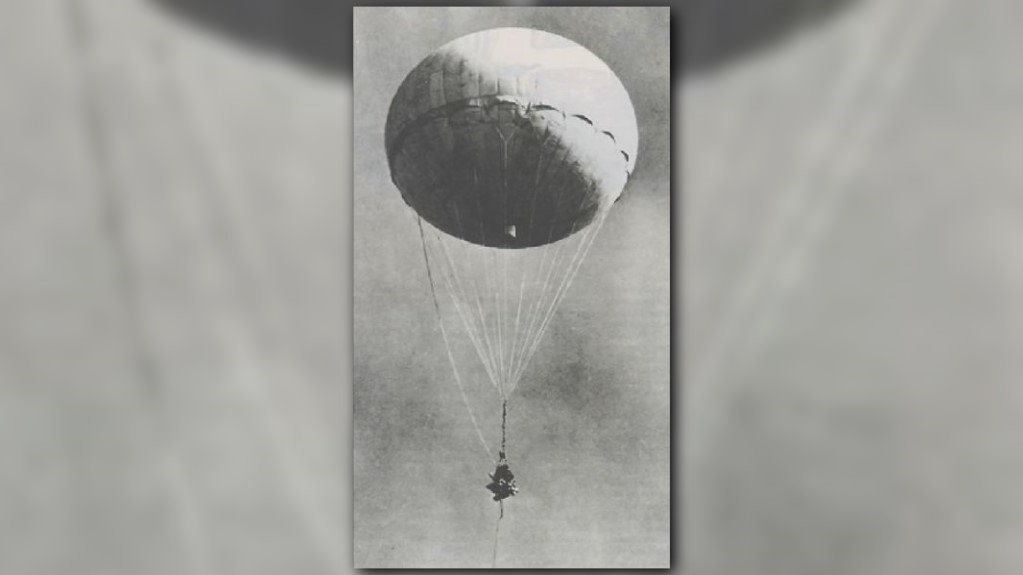
Japanese scientists thought to make use of the newly-discovered jet stream - a fast-moving river of air tens of thousands of feet up from the Earth's surface. The idea was for the balloons to float across the Pacific Ocean, reach the mainland of the United States, where they would drop incendiary bombs from as high as 40,000 feet. The intent was for the bomb blasts to start fires, kill people, leave Americans frightened and bewildered, and ultimately divert the country's war resources.
"Bombs would just drop out of the sky from nowhere," said Micheal Unsworth, former Michigan State University librarian, and World War II historian who has spent decades researching the Japanese Fu-Go attack. "The campaign didn't go as well as the Japanese had thought."
The majority of the Fu-Go Balloons failed and fell into the ocean. However, 300 of the balloons made it to the U.S. mainland, and were recovered by federal officials. Years after the war ended, the public learned that the feds created a media blackout on this attack because they didn't want word to get back to the Japanese that any of these balloons had reached the United States.
During WZZM's research for the February 2017 story, the TV station learned that Don Piccard, a Minnesota man, still had the Dorr balloon in his possession. Piccard, who comes from a family of balloonists, happened to be working as a Navy balloon and airship rigger at the US Naval Air Station in Lakehurst, New Jersey in 1945.
The Navy finished testing the Fu-Go balloons in late 1945, and began destroying them. Piccard was tasked to throw them into the dumpster. He asked his senior officer if he could keep one of the balloons, and was granted permission to do so.
It was later determined that the balloon he chose to keep happened to be the one found in Dorr, Michigan.
Piccard used it to make his historic flight over Minneapolis in 1947.
WZZM learned of Piccard's famous flight from Michael Unsworth. After completing the on-camera interview with Unsworth for the story, he handed WZZM a copy of a 2001 issue of Air and Space Magazine. Inside that issue was a full article about Piccard's historic 1947 flight, including actual black-and-white photos that were taken of the flight.
WZZM then decided to reach out to Mr. Piccard for confirmation that the balloon he used was in fact the one that was found by those three boys in Dorr.
"It was the Fu-Go envelope that was found in Michigan," said Piccard, during a 2017 phone interview with WZZM.
Piccard then told WZZM that the balloon was still in his possession, stuffed inside a drum and sitting idol inside his garage in Minneapolis.
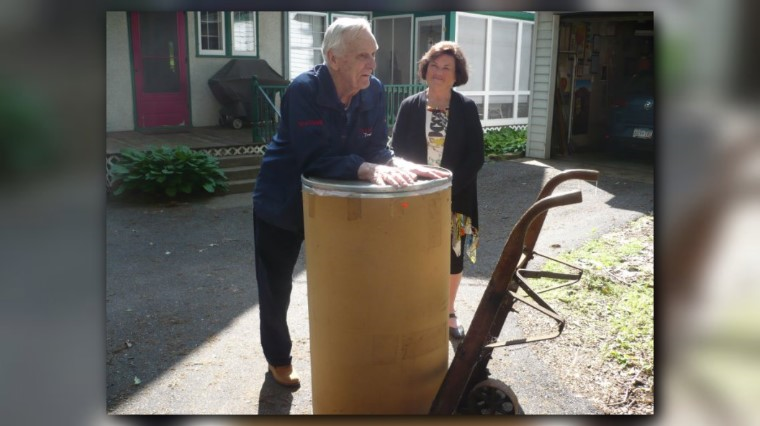
After WZZM aired the 'When the War Came to Dorr' story, the TV station reached out to Theresa Kiel, who is the curator at the Byron Center Museum in Byron Center, Mich. WZZM told Kiel the actual balloon still existed, and she began thinking of ways to try to bring it back to West Michigan and possibly create an exhibit around this amazing and extremely rare artifact from World War II.
"I called Mr. Piccard and he said he'd be willing to sell the balloon to the Byron Center Historical Society for $10,000," said Kiel. "I immediately called a board meeting to discuss."
On May 19, 2017 an anonymous donor came forward with the $10,000 needed to buy the balloon. A few days later, Kiel, along with a group from the Byron Center Museum, traveled to Don Piccard's home in Minneapolis and purchased the balloon and brought it back to Byron Center.
After the group unfurled and examined the balloon in a field in June 2017, it was folded back up and placed in storage, where it continues to reside today.
Kiel, van Heest and Thrash each hope that one day the Dorr Fu-Go Balloon can be displayed and interpreted properly.
"It seems like all the planets have aligned [for the exhibit to be developed]," said Kiel. "All we need is the funding."

If you're interested in making a donation to help make this exhibit, go to: www.byroncentermuseum.com. You'll be able to make a donation using PayPal.
If you'd rather donate by check, you're asked to send it to:
- Byron Museum Go Fu-Go
- Box 20
- Byron Center, MI 49315
►Make it easy to keep up to date with more stories like this. Download the WZZM 13 app now.
If you know of a story that would make for a great "Our Michigan Life" feature, please send a detailed email to WZZM 13's Brent Ashcroft at life@wzzm13.com.

